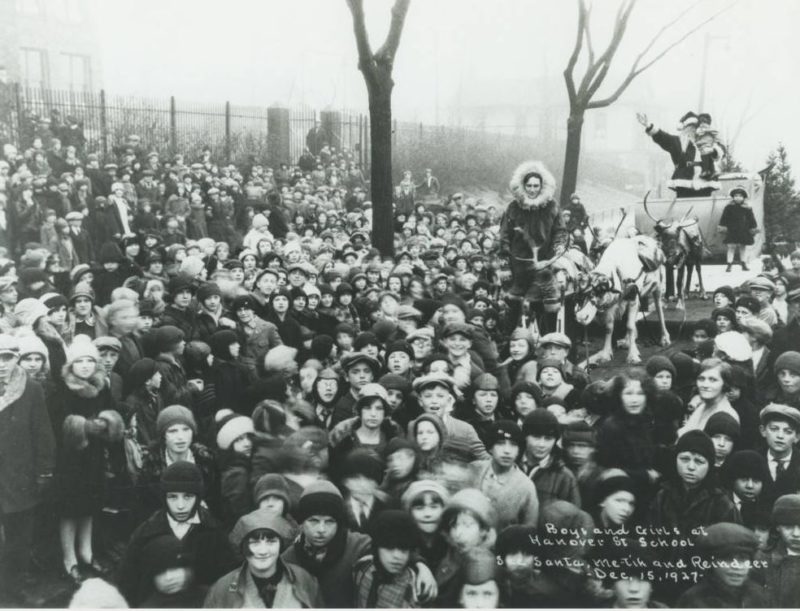It seems like the back to school sales are barely over when the Christmas trees start to appear. The commercial drive of the holidays may seem like a modern problem but historian John Gurda tells us about the spending frenzy that gripped 19th century Milwaukee.
Each year the lights go up a little earlier. Each year, more people ignore the ghosts and jack-o’-lanterns of Halloween, sail right past the Pilgrims and turkeys of Thanksgiving, and proceed directly to Christmas. The first house on our block was decorated in October, even before the leaves were down.
Christmas now seems to fill an entire quarter of the year, and the day is approaching when back-to-school sales will compete head to head with holiday specials.
Our ancestors were different, weren’t they? Not for them, this obsession with shopping and spending that grips us every holiday season. They gathered in reverence around Nativity scenes and shunned the crass commercialism that rules our celebration, didn’t they?
Not really. A look at Milwaukee Sentinel stories from the 1800s reveals that there were dollar signs hiding in the greenery even then, and unmistakable signs of holiday stress.
Consider a Christmas editorial from 1846 — the same year Milwaukee became a city. The Sentinel’s editor began, innocently enough, by invoking the spirit of a Dickens Christmas: “The return of the Holiday season, associated from early childhood with pleasant memories of family gatherings, friendly greetings, and general festivity, seems to diffuse a genial glow throughout the whole community.”
The next paragraph started a baldly promotional list of stores in the ragtag frontier town that offered toys, books, dry goods, groceries, variety wares, and “articles of dress and fancy work.”
The editor concluded, “He must be hard to please, indeed, who cannot find something to his taste in making the round we have indicated. To those who think of buying we say, buy quickly.”
The engine of Christmas commerce was in high gear by the end of the century. December issues of the 1898 newspaper were larded with advertisements for all types of gifts.
In those pre-PETA days, Espenhain’s department store sold “Genuine Mountain Lion Rugs, full head, open mouth, value $35, a handsome present, at $22.50.”
Heyn’s store offered willow doll carriages for 33 cents and china dolls for 39 cents.
Gimbel’s advertised 100-piece sets of porcelain dinnerware for $4.98, and sets of Haviland china for less than $8.
American Beauty roses, however, sold for the surprisingly modern price of $24 a dozen in 1898. “Worth their weight in gold,” said the Sentinel. The paper reported a rush of out-of-town orders, “especially from millionaire lumbermen in the Northern woods.”
With so much to buy, Christmas festivity turned to Christmas frenzy. December 24, reported the Sentinel, was “a wild carnival time of belated gift-buying.” But it wasn’t just last-minute shoppers who found the commercial crush of Christmas simply too much at times. Male or female, the relentless pressures of the season made some Milwaukeeans want to scream.
The Sentinel quoted an especially vocal malcontent in 1898: “Christmas is overdone and overrated. It is a season of reckless extravagance, of entailing obligations on other people and of striving to meet obligations that ought never to have been thrust on one. It’s a bore, a stupid farce, and I’m done with it. Not a present shall I make.”
Feeling a little overwhelmed by all the holiday hoopla? Don’t worry. You’re carrying on an old Yuletide tradition.











